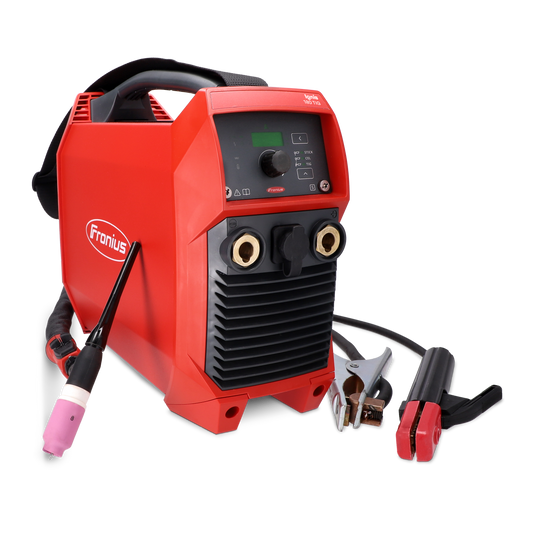TIG welding is an ideal process for welding thin steel and stainless steel in order to create neat welds that don’t have any distortion or discoloration. It’s easy to blast through or melt thin metal if you aren’t able to control your heat input, and therefore a TIG welder with pulsing and a foot pedal can make your life a whole lot easier. While a simple rule of thumb for working with thin steel is to practice TIG welding on scraps first, there are some simple tips you can keep in mind that will make life a whole lot easier.

Should You Use Filler Rod on Thin Steel?
Sometimes metal is thin enough that you can weld it effectively without using a filler metal. A TIG welder can run at about 60 amps and get the job done on really thin steel or stainless. Keep in mind that this applies to steel and stainless steel. Aluminum is a whole other ball game. You always need to add filler metal when you’re welding aluminum.
TIG Welding with a Foot Pedal or Torch Control?
When you’re welding thin metal, it’s going to be important to control the torch, keeping it pointed right at the weld joint without burning over to the sides. A foot pedal provides the control you need without interfering with your torch hand. You’ll want to keep your torch hand as steady as possible when you’re welding thin metal, and that’s where a pedal comes in really handy.
It is also commonly suggested to reinforce your welding glove by adding a piece of heat resistant cloth to one of your fingers on your hand that’s holding the torch. This is typically put on the pinky. This makes it easier to prop one finger on the metal while you work without burning it. You can either slide it along the workpiece and prop it up to maintain the right arc distance. Baker's Gas has just what you need with the Flak Finger by Black Stallion
Weld Downhill When You Can on Thin Metal
While you can TIG weld thin metal in a variety of positions, it’s extremely easy to weld downhill quickly with a lot of control. If you’re welding thin metal, you’ll be able to move at a fairly constant travel speed without much effort. This tip may be best for TIG welders who have less experience. Keep a tight arc and keep the puddle moving nice and steady. Also, if you do end up welding uphill, you’ll want to weld with a slightly lower amperage.
How to Increase Your Travel Speed While TIG Welding
If you need to increase your travel speed while welding thin metal, you can increase the number of pulses per second (say in the 100 pps range). Keep in mind that you’ll need to keep the torch moving in order to prevent distortion or discoloring of your metal. A faster pulsing rate is only useful when you need to keep travel faster, so make sure you pay attention to the way the puddle moves forward. A fast weld can still be a solid weld, but it may take a little practice before you can get it right on thinner metal.
Learn How to Tack without Melting the Metal
Tacking with a TIG welder can be really quick and efficient, but if you have the settings or torch position wrong, you can also melt the edges of your metal work piece. While some of the newer TIG welders have a tack setting, either way, you’ll want to practice making quick, on target tack welds with your TIG machine. Get some scrap metal out and test it out.
When I say that this is a quick tack, we’re talking in the ballpark of a tenth of a second. You’ll need to be careful about the right amperage settings based on the metal thickness before you give this a go on a piece you hope to use.
Beware of TIG Welding with Too Much Heat
TIG welding with too much heat will cause problems down the line with rust. No matter how you grind or polish your welds, they’ll rust in the long run if you blasted them too hot. So while you can increase your travel speed with a faster pulse rate, keep in mind that there are risks to TIG welding with too much heat. If you’re running your own welding shop or welding a household item that you hope to use for years to come, practice controlling the heat input with your TIG welder so that you learn to recognize the signs of a puddle that is too hot.
TIG welders make your life a lot easier when working with thin metal because they provide greater control. If you’re learning to TIG weld, make sure you practice on thin steel and stainless steel before working on a project. Thankfully, there are a lot of settings and techniques you can use to your advantage in order to create a great weld.


